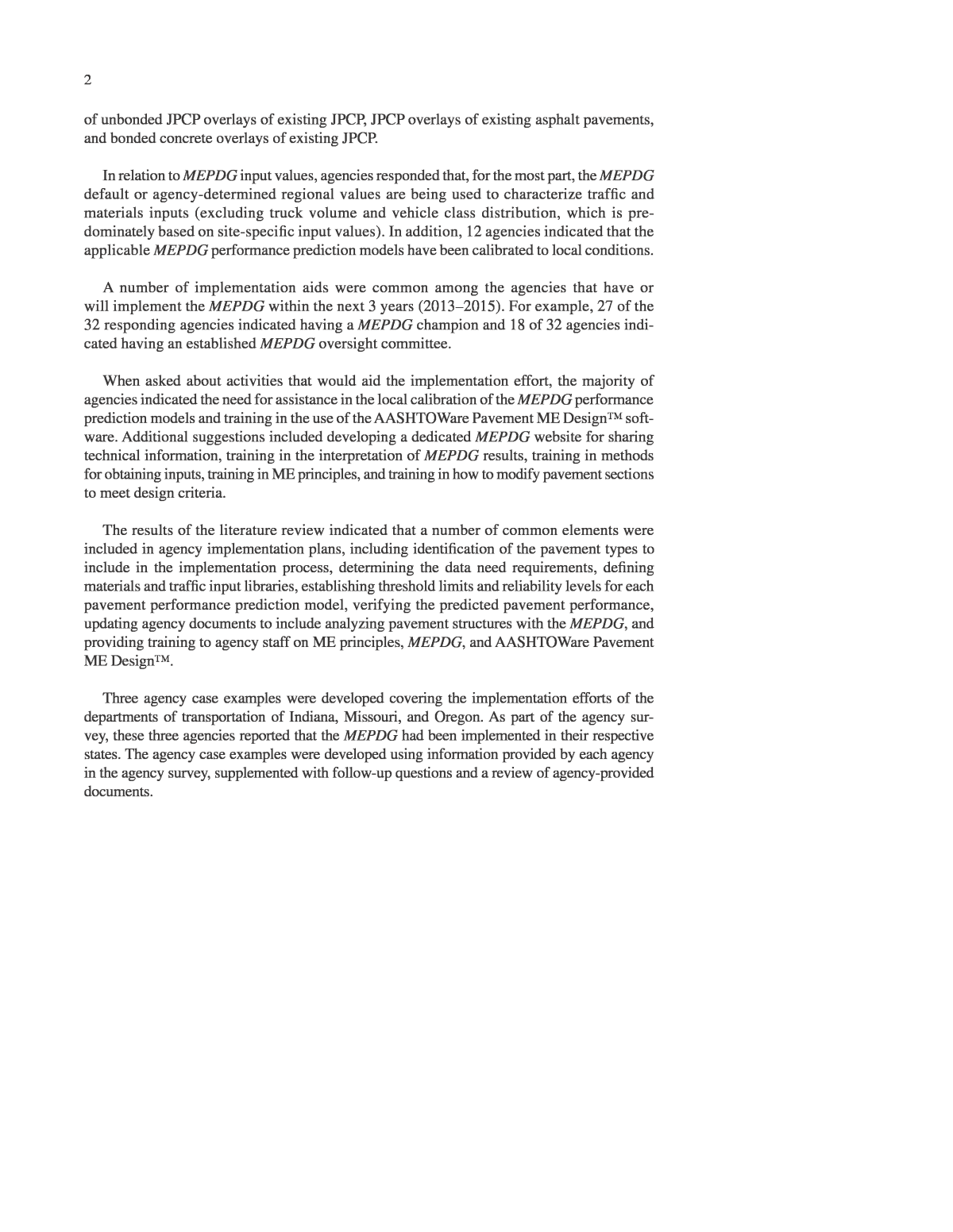

Evaluate the effective modulus of subgrade reaction k using the procedures described in Section 5.4.6.Determine the terminal serviceability and allowable serviceability loss due to traffic: p t = 2.5, ΔPSI = 1.9 (this may be reduced if frost heave or swelling soils are an issue).Evaluate the design traffic: W 18 = 18.9 million ESALs.The steps in the 1993 AASHTO rigid pavement design procedure are summarized below in the context of the example baseline scenario presented in Section 6.2.1: Recommended load transfer coefficients for various pavement types and design conditions (AASHTO, 1993). See Section 5.5.1 for determination of the drainage coefficient C d. The joint load transfer coefficient J is a function of the shoulder type and the load transfer condition between the pavement slab and shoulders recommended values are summarized in Table C-4. The PCC parameters S c and E c are standard material properties mean values should be used for the pavement design inputs. Other layer properties include the modulus of rupture S c and elastic modulus E c for the Portland cement concrete slabs, an empirical joint load transfer coefficient J, and the subbase drainage coefficient C d. 1Ĭ.3 Rigid Pavement Structural Design Design Equation Convert SN 2 to the required thickness of granular base: D 2 = SN 2 / m 2 a 2 = 14.3 → 14 inches.Assign the remaining required structural number to the granular base layer:.Convert SN 1 to the required thickness of asphalt: D 1 = SN 1 / a 1 = 5.95 → 6 inches 1.

5.16), solve for the required structural number for the asphalt concrete surface layer: SN 1 = 2.62. (C.2) with M R set equal to the granular base resilient modulus E BS = 40,000 psi (from the correlation in Eq.
#AASHTO 1993 PAVEMENT DESIGN GUIDE PDF HOW TO#
Pavement Design: Materials, Analysis, and Highways shows, step by step, how to apply the latest, software-based AASHTOWare Pavement Mechanistic-Empirical Design method. Written by two seasoned civil engineering educators, the book contains precise explanations of traditional and computerized mechanistic design methods along with detailed examples of real-world pavement and highway projects.

This student-friendly textbook offers comprehensive coverage of pavement design and highways. Master the principles, analysis, and design in pavement engineering.


 0 kommentar(er)
0 kommentar(er)
